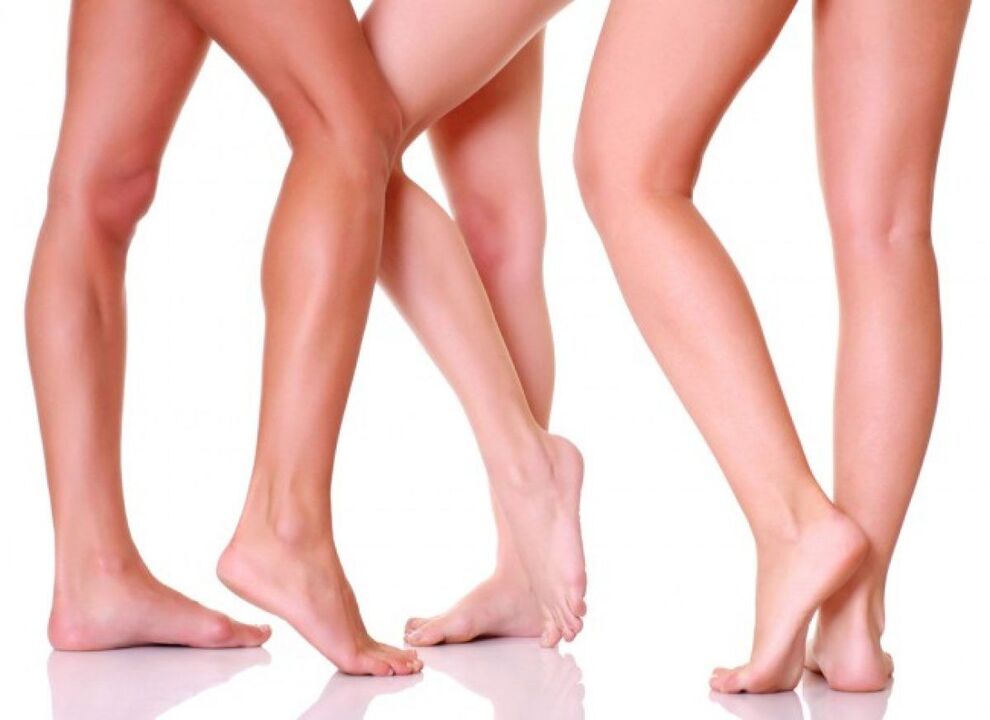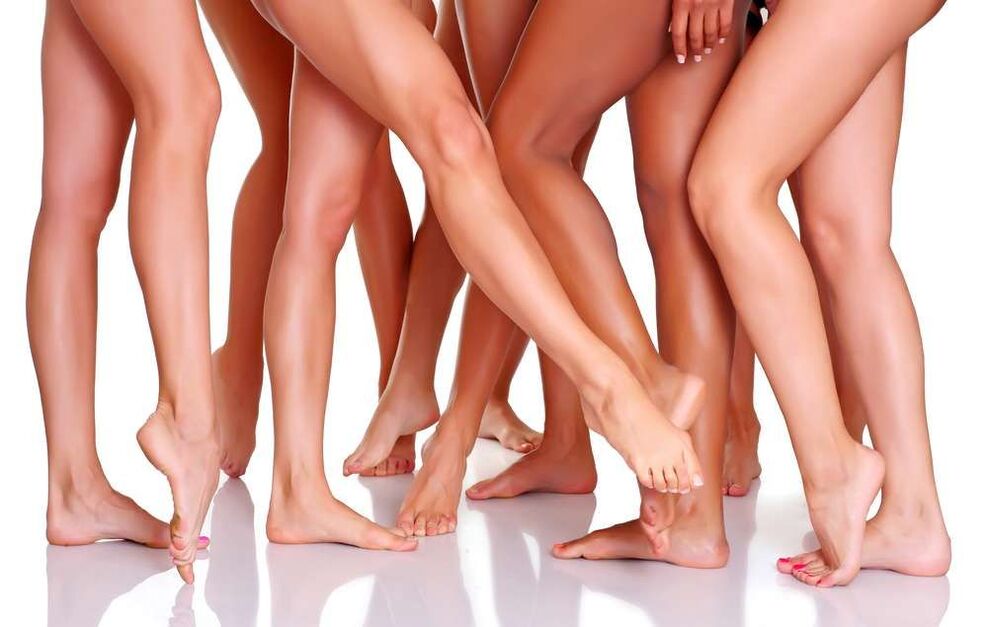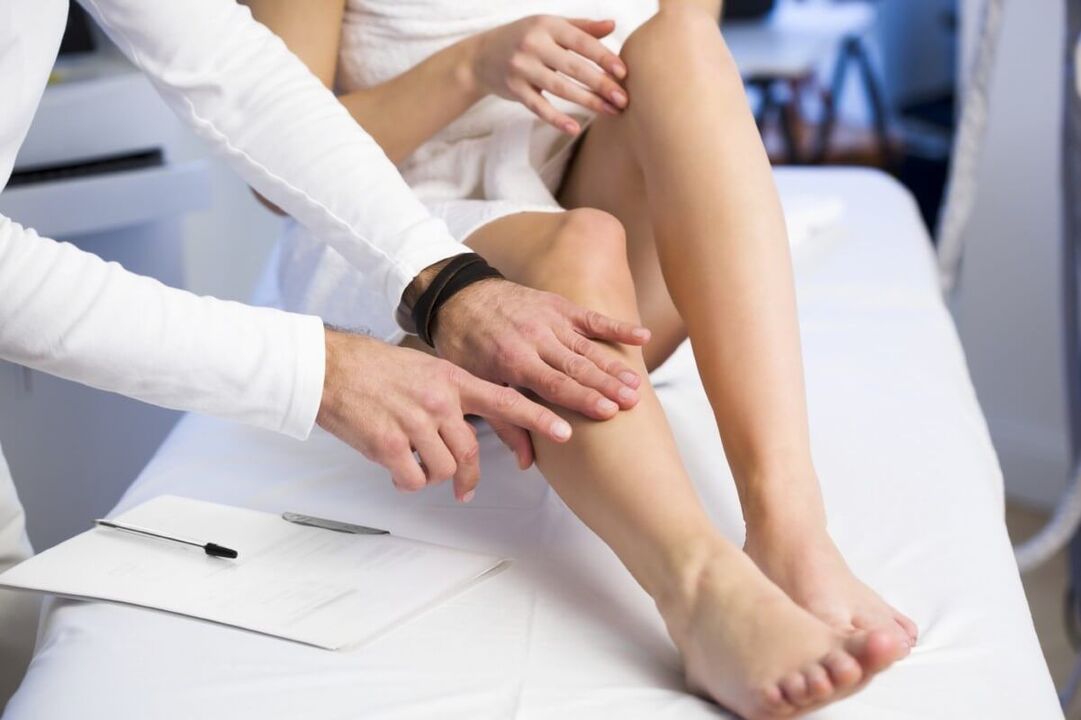The information in this section cannot be used for self-diagnosis and self-medication. In case of pain or other exacerbation of the disease, diagnostic tests should be prescribed only by the attending physician. For a diagnosis and the correct appointment of treatment, it is necessary to contact a specialized specialist.

Varicose veins are one of the most common vascular diseases. It affects approximately 25% of women and 10% of men in the world. This disorder is a pathological process in which the veins swell and protrude. It is caused by poor vascular patency. As a result, the blood accumulates and stretches the walls. They become too thin, which manifests itself in a bluish mesh on the skin. The main reason for the development of the disease is considered to be hormonal change. Menstruation, pregnancy, labor and menopause are all reasons why women are more prone to this disorder and are more interested in its treatment than men.
Signs of varicose veins in women
Quite often, patients miss the initial stage of the disease. They attribute the accompanying symptoms to general ailments, uncomfortable shoes, adverse weather conditions, drop in atmospheric pressure, etc. Such tactics are wrong. It is very important to note the main signs of varicose veins in the initial stage. In this case, its treatment will be easier and faster. The most common symptoms of the disease include:
- Swelling of the feet. It is worth noting that the limbs will be shed both simultaneously and separately.
- Vascular network on the skin of the legs.
- Sensation of itching and burning in the calves.
- Increased pigmentation of the skin of the legs.
- The vessels of the lower extremities become clearly visible even with the naked eye.
- Great feeling of heaviness in the legs, worse in the evening.
- Convulsions in the lower limbs.
In addition to the above characteristic manifestations, the veins in the legs acquire increased sensitivity. A woman, when she touches them, experiences painful sensations. Bruises and wounds on the legs do not heal for a long time. Injuries occur from even the slightest blow. The limbs eventually become covered with sores. All of these symptoms worsen after prolonged standing or exercise. If you find at least one or more of these manifestations at once, you should immediately contact a qualified specialist.
The reasons for the development of the disease
As a rule, the disease occurs against the background of the individual characteristics of the organism, which depend on the patient's lifestyle and his genetic predisposition. The main congenital cause of the development of the disease is considered to be excessive weakness of the valvular apparatus of the veins. However, the factors that provoke this disease are known to medicine. The most common are:

- stand systematically in an upright position;
- sedentary work;
- sedentary lifestyle;
- overweight;
- excessive physical activity;
- uncomfortable shoes;
- bad habits.
Also, women are prone to this disease due to pregnancy. Varicose veins of the lower limbs can manifest themselves both directly during the period of pregnancy, and after childbirth.
Most often, the pathology of the cardiovascular system is a provoking factor. They are accompanied by problems with blood flow through the veins. This leads to chronic valve insufficiency. Against the background of these processes, the blood in the veins stagnates. It overwhelms them and promotes stretching. Knots and seals are formed. Over time, deformation of the vessel walls occurs. Under the influence of these processes, the trophism of the legs is disturbed. Complications appear on the calves in the form of wounds that do not heal in the long term.
Which doctor should I contact?
The disease is not only a cosmetic problem, but also brings considerable discomfort and can lead to dangerous consequences. Therefore, at the first unusual changes in well-being, a woman should go to a medical institution. Initially, you should visit a therapist. It is this doctor who will listen to the patient's complaints and advise her to contact a narrow specialist. Diagnosis and treatment of this pathology is carried out by:
- Phlebologist
- Vascular surgeon
Before telling how to treat varicose veins on the legs in women, the doctor should familiarize himself with the clinical manifestations. To do this, she will conduct a survey, during which she will ask the patient:

- How long have you been worrying about unpleasant sensations?
- How much time do you spend on your feet?
- Does swelling of the lower limbs bother you?
- What is your professional activity connected to?
- What chronic diseases do you have in history?
- Is there a genetic predisposition to the disease?
- Do you use hormonal drugs?
After the interview, the doctor will examine and palpate the affected limbs. He will also entrust the passage of the instrumental and laboratory tests. Their results will allow you to make the most accurate diagnosis.
Conservative treatment of varicose veins on the legs in women
As soon as the doctor receives the test data, he will begin to work out a course of therapeutic procedures focused on eliminating the disease. The method of treatment is selected on a case-by-case basis. In the initial stages, specialists resort to conservative therapies. This type of treatment involves the use of medicines from the following groups:
- Flebotonikov. They relieve cramps.
- Analgesics. These drugs relieve pain.
- Drugs that reduce the risk of thrombosis.
In addition, many experts recommend that women wear compression underwear. The stockings are selected by the doctor. He also explains how to use them correctly. During the treatment, you should refuse to visit saunas and take hot baths. High temperatures dilate the wow and reduce its tone. Doctors recommend visiting the pool 2-3 times a week.
Diet also plays an important role in eliminating the disease. A woman suffering from varicose veins should refuse:
- Flour;
- coffee and tea;
- sweet;
- fatty and fried.
You should enrich the diet with freshly squeezed juices. These can be citrus, blueberry and apricot nectars. If your doctor finds a high risk of thrombosis, she should recommend the use of pumpkin juice. Fasting days also have a beneficial effect. They will allow the body to get rid of toxins and excess weight. You need to spend these days no more than three times a month. In some cases, doctors prescribe hirudotherapy. It also has a positive effect on the state of the vessels of the lower limbs.
Operative therapy
If the disease is at an advanced stage, you cannot do without the intervention of a vascular surgeon. This specialist will perform the surgical treatment of varicose veins in the lower limbs. The most common and effective methods are:
- Coagulation. It can be laser or radio frequency. Today this type of treatment is carried out under local anesthesia and allows you to undergo outpatient admissions.
- Phlebectomy. This type of treatment aims to remove knots and remove deformed veins.
- Sclerotherapy. It involves the injection of points. In some of the more severe cases, the procedure is done under the supervision of an ultrasound scanner.
All of the above techniques are aimed at the removal of nodules and seals. After surgery, it is important to make every effort to prevent them from recurring. Therefore, all appointments of the attending physician should be followed.




































